
| Tree Lucerne Moth (previously known as : Mecyna ornithopteralis) PYRAUSTINAE, CRAMBIDAE, PYRALOIDEA | (donherbisonevans@yahoo.com) and Stella Crossley |
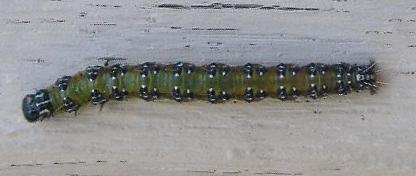
(Photo: courtesy of Kristine Hendry, Apsley, Victoria)

| Tree Lucerne Moth (previously known as : Mecyna ornithopteralis) PYRAUSTINAE, CRAMBIDAE, PYRALOIDEA | (donherbisonevans@yahoo.com) and Stella Crossley |

(Photo: courtesy of Kristine Hendry, Apsley, Victoria)
This Caterpillar has sparse hairs and is multicoloured: being basically green with yellow stripes along the sides, and black and white spots all over. It has a prominent brown head capsule, with three white stripes on its black collar. It has been found for many years, regularly every year, in a suburban garden in Manly (Sydney, New South Wales) on a particular bush of:
which is stripped by the brood of Caterpillars. It also has been found feeding on other species of FABACEAE such as:
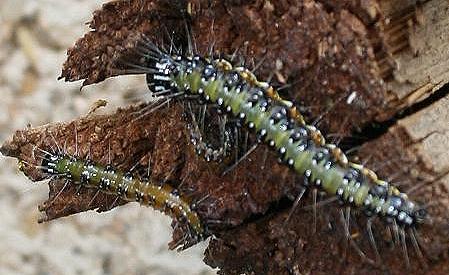
Thus the caterpillar is an important controlling agent of Broom infestations. However, the caterpillar is also an agricultural pest on:
The caterpillars grow to a length of about 3.5 cms.
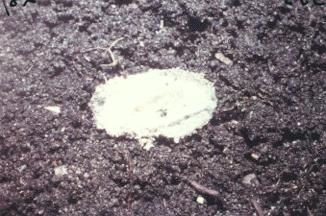
When fully grown, our specimen in Sydney burrowed into the soil at the foot of the foodplant, and there pupated inside a papery dense white cocoon. Another specimen in Melbourne climbed up its container and pupated near the lid. The adult moth emerged after about four weeks in autumn in Melbourne, and then took nearly two days to extend its wings fully.
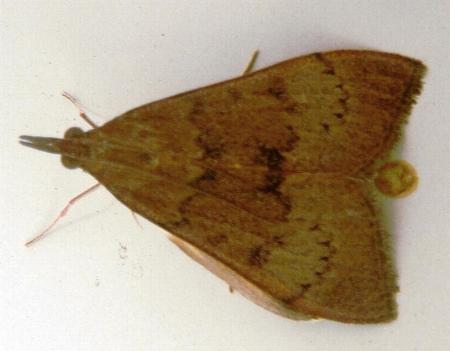
The adult moth appears in two basic forms. One has brown forewings, each crossed by three wiggly black lines, and the other has grey forewings, each with a broad pale submarginal band. Both forms have bright yellow hindwings, each with a black border.

The wingspan is about 3 cms. The labial palps on the head are lengthened and stretched out, and look like a birds beak.
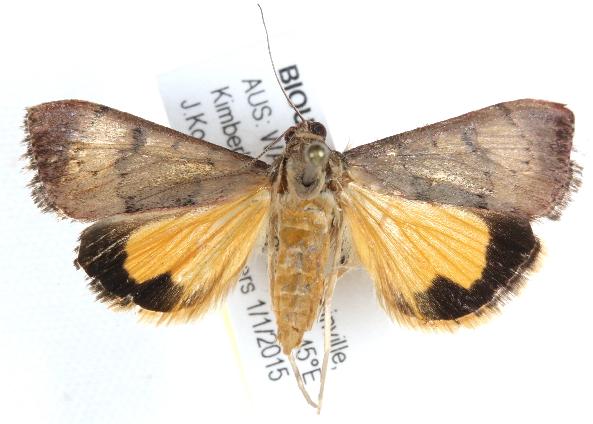
The species has been found in :
as well as
It is closely related to the overseas pest species : Uresiphita gilvata.
The variations in behaviour and colour suggest that the Australian specimens under the name Uresiphita ornithopteralis are actually a species complex, and further work may show how to distinguish them.
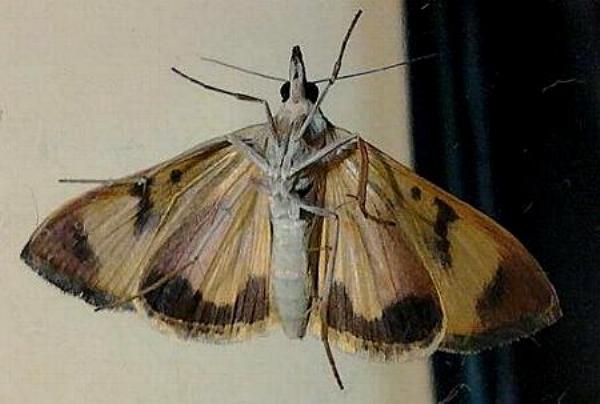
Curiously, the underside in the natural posture looks like a face (with quite a long nose).
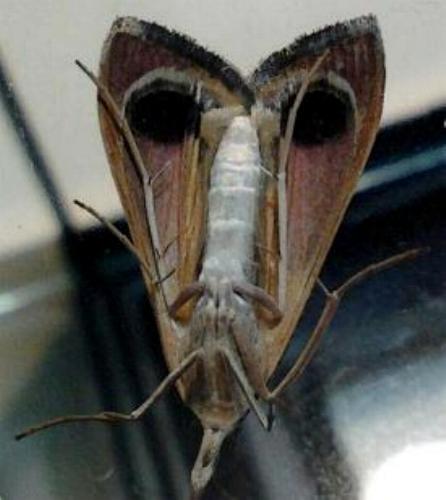
Further reading :
Ian F.B. Common,
Moths of Australia,
Melbourne University Press, 1990, pls. 9.33, 26.6, pp. 67, 358.
Achille Guenée,
Deltoïdes et Pyralites,
in Boisduval & Guenée :
Histoire naturelle des insectes; spécies général des lépidoptères,
Volume 9, Part 8 (1854), p. 411, No. 535, and also
Plate 8, No. 12.
Peter B. McQuillan, Jan A. Forrest, David Keane, & Roger Grund,
Caterpillars, moths, and their plants of Southern Australia,
Butterfly Conservation South Australia Inc., Adelaide (2019), p. 87.
 caterpillar |  butterflies |  Lepidoptera |  moths |  caterpillar |
(updated 30 August 2012, 4 June 2025)